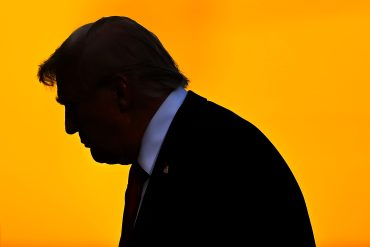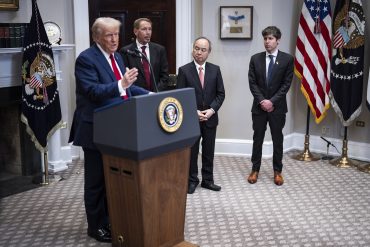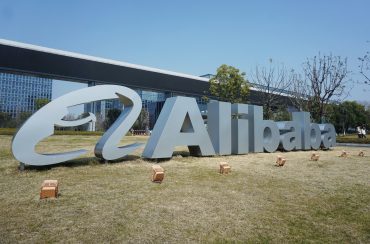
- AI Governance
- Artificial Intelligence
- Global Tech Race
Trump’s AI Action Plan Aims to Cement U.S. Tech Dominance
7 minute read

A bold blueprint for American supremacy in artificial intelligence—blending deregulation, tech exports, and geopolitical ambition.
WASHINGTON—President Donald Trump’s administration has unveiled “Winning the AI Race: America’s AI Action Plan”, a sweeping federal blueprint aimed at cementing U.S. dominance in artificial intelligence. The plan outlines over 90 policy actions spanning innovation, infrastructure, and international strategy, marking a sharp turn toward deregulation and aggressive export policies.
The 28-page document, released by the White House Office of Science and Technology Policy, represents a philosophical pivot away from the cautious regulatory approach adopted under previous administrations. With a focus on speed and global influence, it signals that the U.S. is treating AI as both an economic growth engine and a national security imperative.
Three Pillars of AI Leadership
The Action Plan organizes its initiatives under three core pillars: Accelerating Innovation, Building American AI Infrastructure, and Leading in International Diplomacy and Security.
Among its most notable initiatives is a call for “full-stack AI export packages”—bundling hardware, software, models, and industry standards for allied nations. This approach, orchestrated by the Commerce and State Departments, aims to strengthen U.S. alliances while setting global norms for AI deployment.
“We are moving with urgency to make this vision a reality,” said Michael Kratsios, director of the OSTP, calling the plan a decisive step toward ensuring that “the world continues to run on American technology.”
Deregulation and Infrastructure Blitz
A cornerstone of the plan is removing regulatory barriers that officials argue slow AI innovation. Agencies are instructed to identify outdated rules for repeal, while a new Office of AI Permitting will streamline approvals for AI-related projects, such as semiconductor fabrication plants and hyperscale data centers.
The administration is also prioritizing workforce expansion. Recognizing the labor bottlenecks in energy, construction, and data infrastructure, the plan calls for federal incentives to train electricians, HVAC technicians, and AI-focused engineers. According to the White House, these measures will help meet the surging demand for compute-intensive infrastructure—a sector already straining the power grid and pushing U.S. electricity consumption to new highs.
Free Speech and AI Neutrality
The Action Plan takes aim at what the administration calls “top-down ideological bias” in large language models. Federal contracts will favor developers that commit to free speech principles and transparent training data policies. David Sacks, the newly appointed AI and Crypto Czar, described this as a “non-negotiable step” to ensure that frontier models remain “objective and free from censorship.”
This clause is likely to spark debate in the AI industry, where content moderation and bias mitigation have become hot-button issues. Critics warn that politicizing AI contracts could limit participation from major developers or encourage superficial compliance.

International Competition and Diplomacy
On the global stage, the Action Plan doubles down on countering China’s AI ambitions. The U.S. will intensify its presence in international standards-setting bodies, while tightening export controls on advanced chips and AI systems to Beijing. At the same time, Washington aims to foster “AI partnerships” with countries such as Japan, South Korea, and the UAE—alliances modeled on the strategic collaborations of the Cold War.
“Winning the AI race is non-negotiable,” said Secretary of State Marco Rubio, who also serves as acting national security advisor. “America must continue to be the dominant force in artificial intelligence to protect our economic and national security.”
Industry and Market Response
Tech industry leaders have cautiously welcomed the plan. Executives from Nvidia, Oracle, and OpenAI praised its emphasis on permitting reform and global competitiveness. Venture investors see parallels to the Pentagon’s historical role in catalyzing Silicon Valley’s early growth, with government investment serving as both anchor and accelerator.
Markets reacted favorably: data-center REITs and chip stocks climbed on expectations of increased federal support. Goldman Sachs analysts estimate that U.S. AI-related capital expenditures could surpass $300 billion annually by 2027, provided the infrastructure initiatives outlined in the plan gain traction.
Criticism and Concerns
However, the plan is not without its critics. Civil liberties groups warn that deregulation could open the door to privacy violations and algorithmic abuse. A coalition of advocacy organizations released a “People’s AI Plan” calling for stronger data protections, algorithmic transparency, and safeguards for workers displaced by automation.
Environmental advocates also express concern over the energy demands of large-scale AI training. Studies suggest that next-generation GPU clusters could consume up to 50 terawatt-hours of electricity annually by 2028, equivalent to powering tens of millions of homes.
The plan emphasizes not only infrastructure but also talent development. It proposes new AI-focused apprenticeships, funding for university research programs, and support for vocational training in high-demand trades. By linking AI growth to jobs in construction, energy, and data management, the White House hopes to tie its strategy to middle-class economic gains, particularly in swing states.
Political and Strategic Implications
Analysts note that the plan reflects a convergence of political strategy and economic policy. By framing AI leadership as a matter of national pride and job creation, the Trump administration is seeking to rally bipartisan support for what could become one of the largest tech-focused industrial policies since the space race.
“Artificial intelligence is a revolutionary technology with the potential to transform the global economy,” Sacks said. “To win, the U.S. must lead in innovation, infrastructure, and partnerships—while ensuring these tools serve the American worker.”
Conclusion: A High-Stakes Bet
The “Winning the AI Race” plan underscores the urgency with which Washington views the global AI competition. It is both a blueprint for economic growth and a geopolitical strategy, aiming to outpace China, influence global standards, and ensure that American innovation remains the benchmark for the world.
Whether the plan’s ambitious goals can overcome legislative hurdles, infrastructure challenges, and ethical debates remains to be seen. What is clear is that the U.S. is entering a new phase of AI policy—one defined not by caution, but by speed, scale, and strategic dominance.








